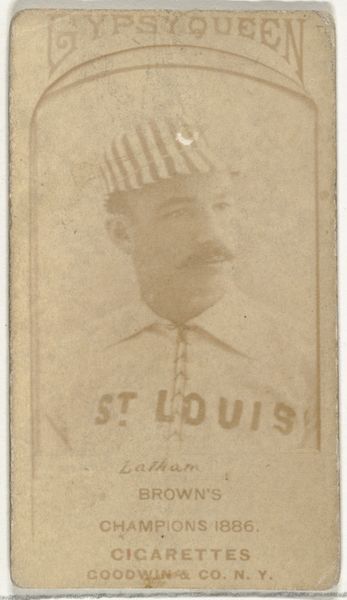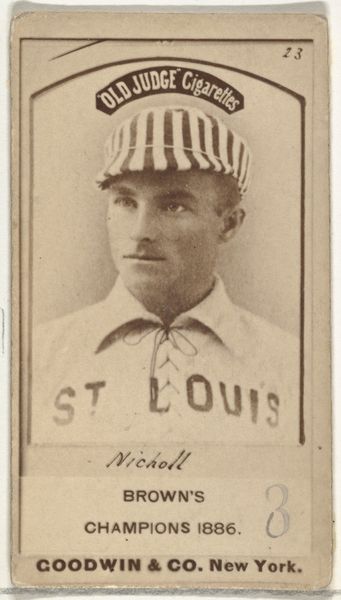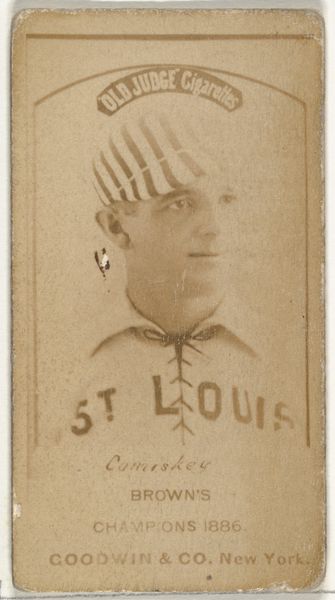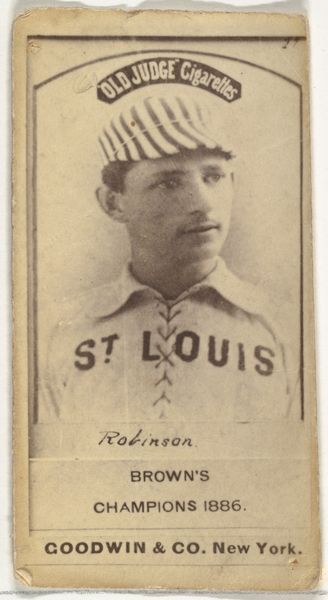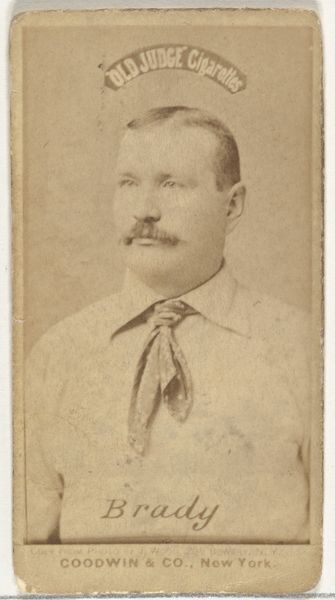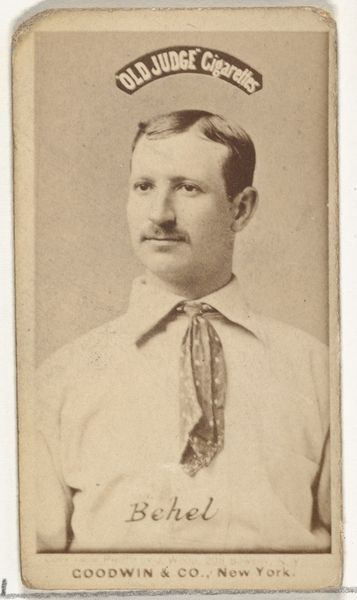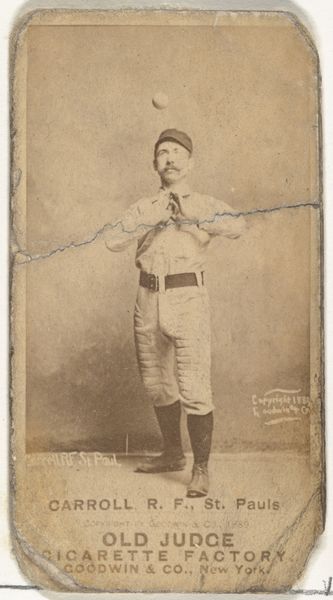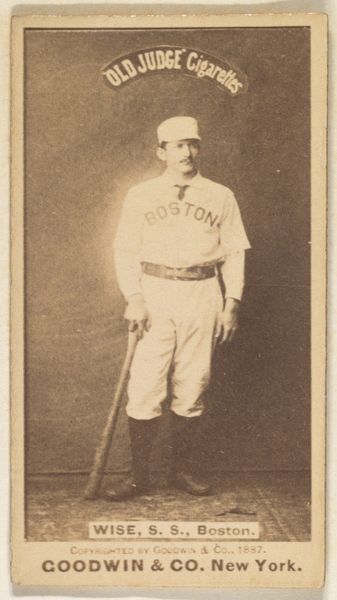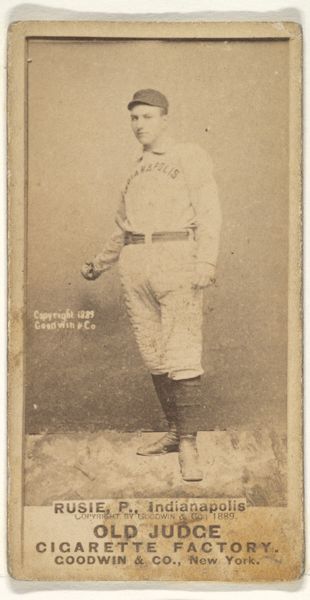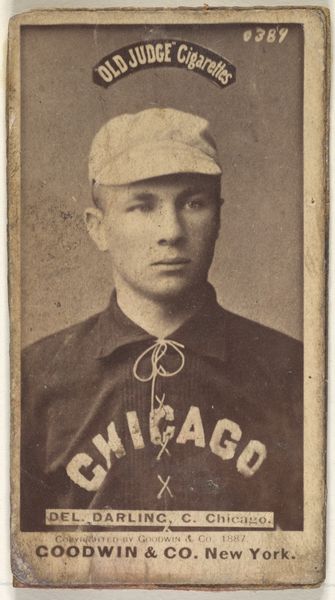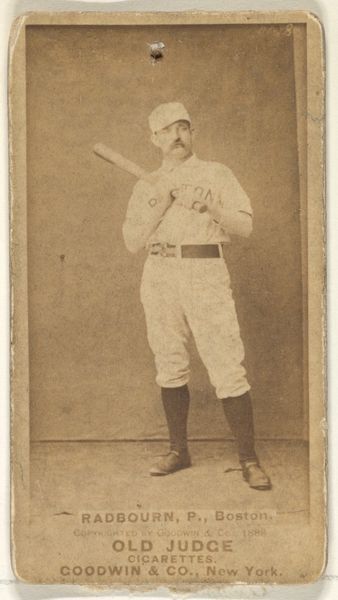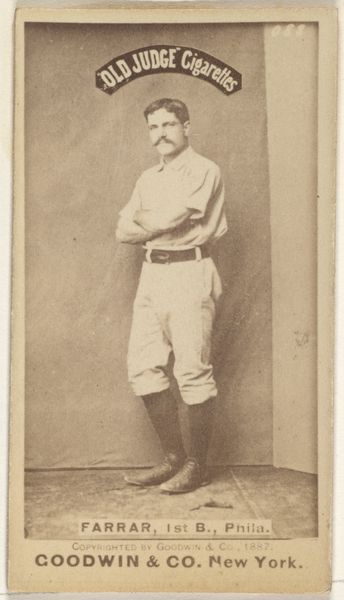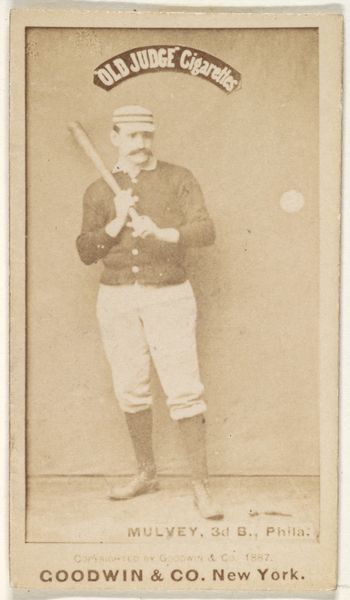
William G. "Bill" Gleason, St. Louis Browns, from the Old Judge series (N172) for Old Judge Cigarettes 1886
print, photography
portrait
baseball
photography
men
athlete
Dimensions: sheet: 2 11/16 x 1 3/8 in. (6.9 x 3.5 cm)
Copyright: Public Domain
Editor: This is William G. "Bill" Gleason from the Old Judge series, a photographic print from 1886 by Goodwin & Company. It has an aged, sepia tone that I find rather charming. What grabs me is how it serves as both a portrait of an athlete and advertisement for cigarettes. What do you see here? Curator: The interplay between portraiture, commercialism, and the rise of baseball is fascinating. Note the standardization of the card's dimensions, enabling mass production and distribution. It's about a shift towards a consumer culture fueled by images, where even sports figures are commodified, wrapped up with a tobacco brand. Who benefits from such depictions and circulations? Editor: So you’re saying that it’s more than just a picture of a baseball player. It represents something bigger about industrialization and consumption? How was it made on a massive scale if photography at the time wasn't as advanced? Curator: Precisely! The photomechanical reproduction, the printing press - these technologies enabled such wide distribution of the image. This wasn’t about creating art for art's sake; it was about producing commodities that circulated widely, constructing fame, fueling capitalist consumption in a rapidly changing social landscape. Does this challenge our notion of who an artist could be? Editor: It certainly does. It makes me think about the labor that went into creating these cards, both the labor of the athlete and of the company distributing the image to the masses, and the consumer labor of choosing. Curator: Indeed. It complicates our relationship to the image itself and reveals more about the systems and modes of exchange which constitute how meaning itself can be constituted in a world defined by mass production. Editor: This perspective really sheds new light on something as seemingly simple as a baseball card. It highlights the economic structures within which the image existed and made its own kind of value.
Comments
No comments
Be the first to comment and join the conversation on the ultimate creative platform.
